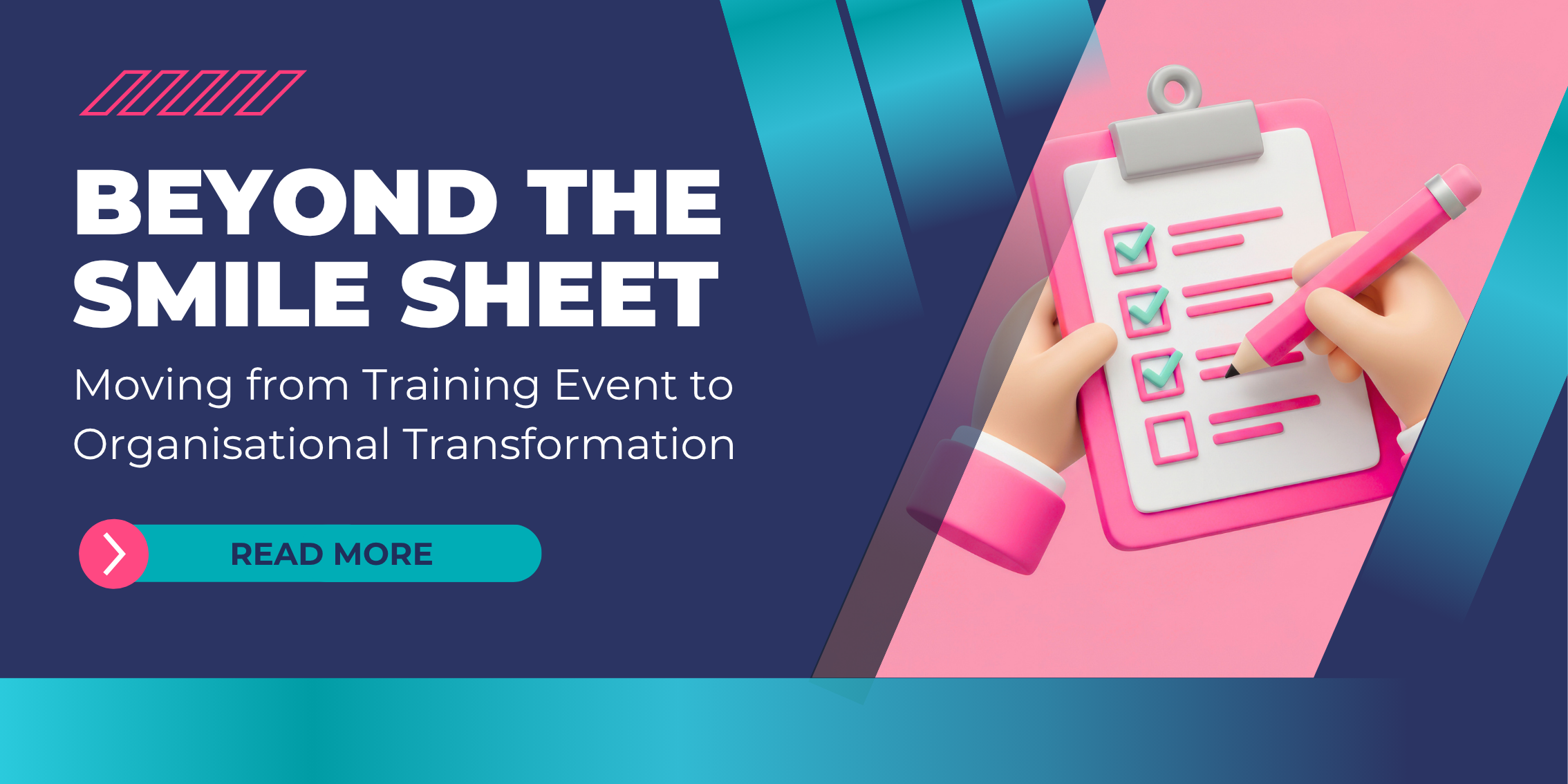
Beyond the Smile Sheet: Moving from Training Event to Organisational Transformation
By Sujan K. Ghosh
In many South Asian organisations, training has long been treated as an event, rather than an investment. Employees attend a workshop, fill out a “smile sheet” to rate the food, the facilitator, and the air conditioning, and then go back to their desks, often unchanged.
The training department ticks a box, HR reports the number of participants, and the organisation proudly lists “capacity building” as a key achievement in its annual report. But beneath this surface of activity lies a painful truth: most training fails to create measurable behavioural or organisational change.
It’s time for South Asian organisations to move beyond the smile sheet, from event-based training to genuine organisational transformation.
The Illusion of Learning
For decades, the dominant model of training evaluation has been Level 1 of the Kirkpatrick Model: reaction. Did participants enjoy the session? Was the trainer engaging? Did they find the material useful? These questions, while valid, only capture sentiment, not substance.
The result is an illusion of learning. A participant who rates a program “5 out of 5” for presentation quality may still be unable or unwilling to apply any of it in the workplace. As long as “happy sheets” remain the primary measure of success, organisations will continue to confuse enjoyment with effectiveness.
The South Asian Reality Check
In South Asia, particularly in Bangladesh, India, Pakistan, Nepal, and Sri Lanka, training is often seen as a reward or formality rather than a strategic tool. Common challenges include:
- Top-down training nomination: Employees are sent to training without alignment to performance gaps or business needs.
- Event-oriented culture: Learning ends when the workshop ends. There’s little follow-up or accountability.
- Budget optics: Training is used to justify HR expenditure, not drive business impact.
- Limited post-training measurement: Rarely are changes in performance, productivity, or customer outcomes tracked.
This approach not only wastes resources but also undermines the credibility of the learning function.
From Training to Transformation
To make learning a lever of transformation, South Asian organisations must undergo a mindset shift, from activity-based training to impact-driven development. Here’s how:
- Start with a Training Needs Assessment (TNA)
A robust TNA links learning directly to organisational goals. It identifies what competencies drive performance and where the real gaps lie. Without TNA, training becomes guesswork: reactive, fragmented, and ineffective. Institutions like Dhaka Bank Training Institute (DBTI) have begun taking bold steps to institutionalise this process, recognising that transformation begins with diagnosis, not delivery.
- Engage Leadership
Transformation demands leadership ownership. When CEOs and senior executives view learning as a strategic investment (not a HR function) it gains legitimacy and momentum. Leadership must champion not just attendance, but application of learning.
- Redefine Success Metrics
Move beyond attendance numbers and feedback ratings. Measure what matters: behaviour change, improved performance, enhanced customer satisfaction, and measurable business results. Integrating tools like post-training assignments, manager check-ins, and performance dashboards can bridge the knowing-doing gap.
- Create a Learning Culture
Learning must be continuous, collaborative, and contextual. Microlearning, digital platforms, coaching, and knowledge-sharing forums can sustain momentum long after the workshop ends. In such a culture, employees learn not because they are told to, but because they want to.
The Strategic Payoff
When organisations align learning with strategy, the results are transformative.
- Productivity rises as employees apply new skills to real problems.
- Engagement improves when staff see the organisation investing in their growth.
- Agility increases as teams become capable of responding to change.
- Most importantly, learning becomes a driver of business excellence, not a ceremonial HR activity.
A Call to Action
The time has come for South Asian organisations to reimagine training. The smile sheet has had its day. It's pleasant but powerless. What our economies need now are learning ecosystems that convert training into transformation, and workshops into measurable results.
The shift won’t be easy. It requires courage to challenge legacy practices, data to prove impact, and leadership commitment to sustain momentum. But the alternative (continuing to invest in training that trains no one) is no longer acceptable.
In the end, the question for every organisation is simple: Do you want people to smile after training, or perform better because of it?
About the Author: Sujan K. Ghosh

Sujan K. Ghosh is a seasoned banking professional with extensive experience in learning and development, human resources, and organisational transformation. Currently the L&D Manager at Dhaka Bank, he is an advocate for continuous learning, and leads initiatives that foster professional growth and enhance institutional capability. Sujan is passionate about aligning people development with strategic business objectives.



